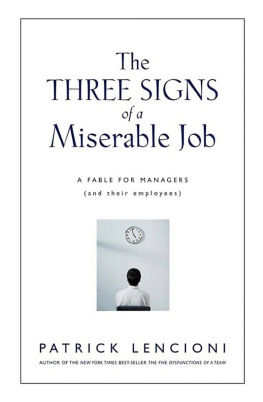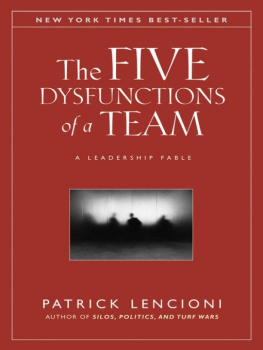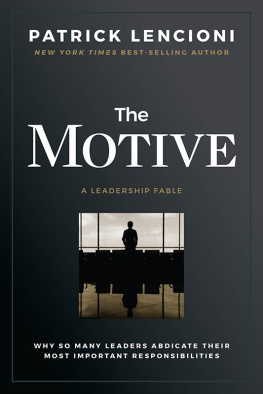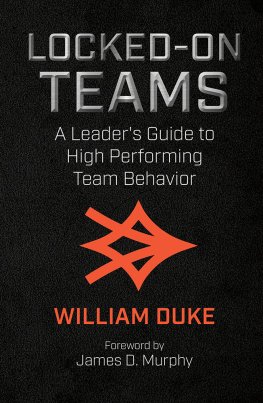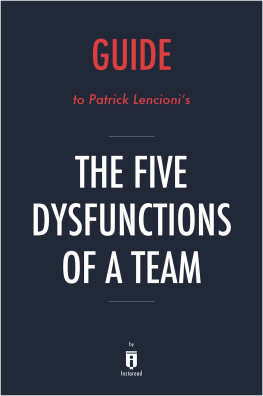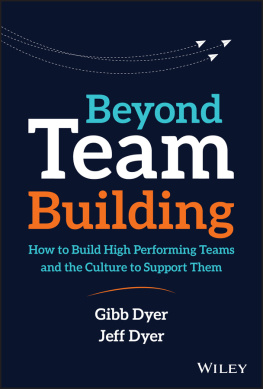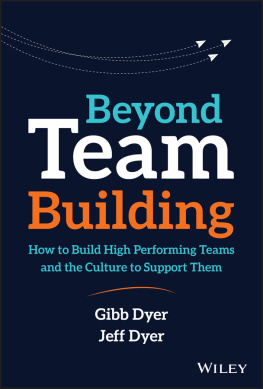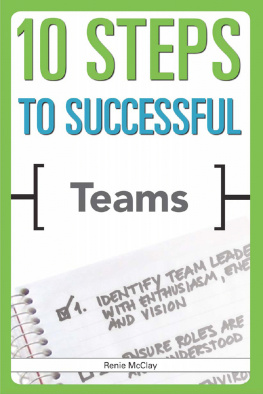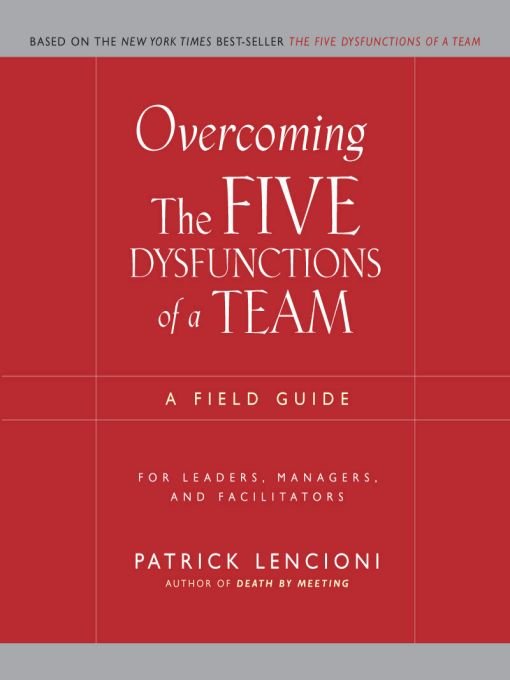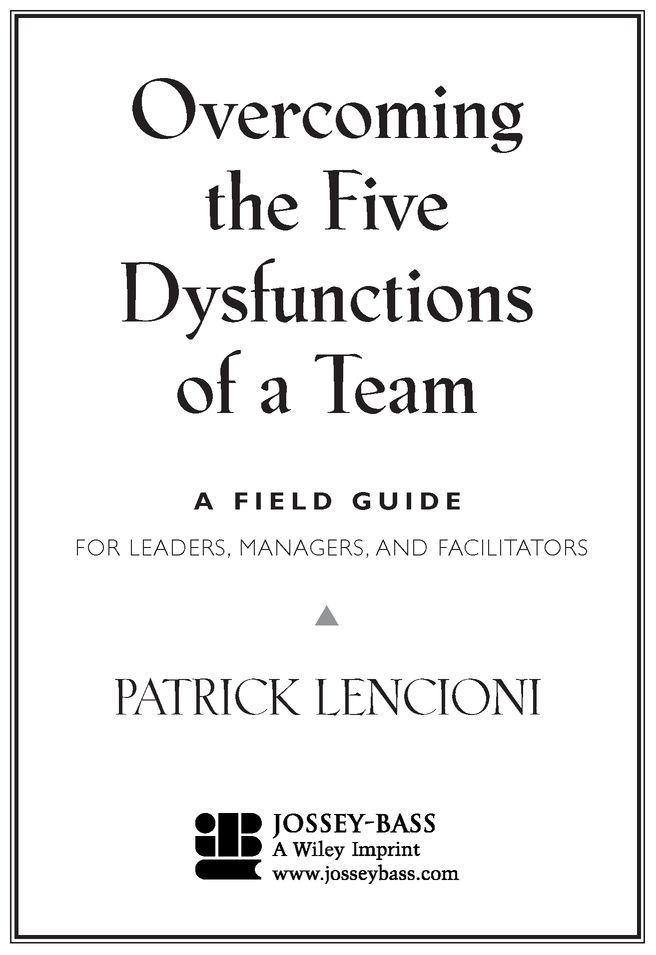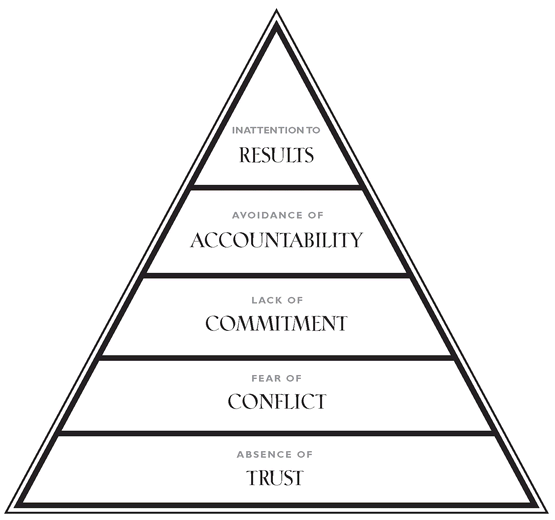Table of Contents
LEADERSHIP FABLES BY PATRICK LENCIONI
The Five Temptations of a CEO
The Four Obsessions of an Extraordinary Executive
The Five Dysfunctions of a Team
Death by Meeting
This book is dedicated to our
Table Group clientswho make all of this possible and whom we appreciate more than we can say
WHY A FIELD GUIDE?
A year after The Five Dysfunctions of a Team was published, I received the welcome news that sales figures had exceeded initial expectations. That was good. But I had been warned that those numbers might begin to tail off in year two, and so, like most authors, I just hoped they wouldnt drop too drastically.
Well, you can imagine how pleasantly surprised I was to learn that instead of decreasing, sales of the book actually increased during the next twelve months. That was great.
But something else happened that I hadnt exactly expected; inquiries to my consulting firm, The Table Group, grew faster than we could have imagined, with readers calling to find out how they could better understand and implement the concepts in the book.
As wonderful as that may sound, it quickly became apparent to us that we could not help even a fraction of the readers who called us, and as a result, some of them might not feel comfortable diving into the process of improving their teams without a little more guidance. That was not so good, and therein lies the inspiration for this field guide.
The purpose of this little book is simple: to provide managers, team leaders, consultants, and other practitioners with a practical tool for helping implement the concepts in The Five Dysfunctions of a Team.
As with my other books, I decided to keep this one relatively short because time is the most precious commodity for most leaders, and learning to build a team, as important as it is, need not be exceedingly time-consuming or complicated. Ive also tried to write and organize it in a way that will make it both readable on its own and easily accessible as a reference tool.
I sincerely hope that it is helpful to you and your team. Good luck!
PATRICK LENCIONI, Lafayette, California, January 2005
SECTION ONE
Getting Clear on the Concept
Because teamwork is a word that is used so loosely and frequently, it seems like a good idea to clarify exactly what Im referring to when I talk about becoming a more cohesive team. Thats what this section is about.
THE CASE FOR TEAMWORK
Building an effective, cohesive team is extremely hard. But its also simple.
What I mean is that teamwork doesnt require great intellectual insights or masterful tactics. More than anything else, it comes down to courage and persistence.
And so, if youre committed to making your team a healthy one, and you can get the rest of the team to share your commitment, youre probably going to make it. And just in case youre not sure this will be worth the time and effortand risklet me make a case for going forward.
Teamwork remains the one sustainable competitive advantage that has been largely untapped.
I honestly believe that in this day and age of informational ubiquity and nanosecond change, teamwork remains the one sustainable competitive advantage that has been largely untapped. In the course of my career as a consultant to executives and their teams, I can say confidently that teamwork is almost always lacking within organizations that fail, and often present within those that succeed.
So why dont we hear more about the competitive importance of teamwork from business scholars and journalists? And why do so many leaders focus most of their time on other topics like finance, strategy, technology, and marketing?
First, because teamwork is hard to measure. Why? Because it impacts the outcome of an organization in such comprehensive and invasive ways that its virtually impossible to isolate it as a single variable. Many executives prefer solutions that are more easily measurable and verifiable, and so they look elsewhere for their competitive advantages.
But even if the impact of teamwork were more easily measurable, executives probably would still look elsewhere. Why? Because teamwork is extremely hard to achieve. It cant be bought, and it cant be attained by hiring an intellectual giant from the worlds best business school. It requires levels of courage and disciplineand emotional energythat even the most driven executives dont always possess.
As difficult as teamwork is to measure and achieve, its power cannot be denied. When people come together and set aside their individual needs for the good of the whole, they can accomplish what might have looked impossible on paper. They do this by eliminating the politics and confusion that plague most organizations. As a result, they get more done in less time and with less cost. I think thats worth a lot of effort.
One more thing is worth mentioning. When it comes to helping people find fulfillment in their work, there is nothing more important than teamwork. It gives people a sense of connection and belonging, which ultimately makes them better parents, siblings, friends, and neighbors. And so building better teams at work can and usually doeshave an impact that goes far beyond the walls of your office or cubicle.
So what are we waiting for? Lets get started.
THE FIVE DYSFUNCTIONS OF A TEAM
A QUICK OVERVIEW OF THE MODEL
As difficult as teamwork can be to achieve, it is not complicated. And so, if I cant describe it in a page or two, then Ive probably made it too complex. Here goes.
The true measure of a team is that it accomplishes the results that it sets out to achieve. To do that on a consistent, ongoing basis, a team must overcome the five dysfunctions listed here by embodying the behaviors described for each one.
Dysfunction #1: Absence of Trust: Members of great teams trust one another on a fundamental, emotional level, and they are comfortable being vulnerable with each other about their weaknesses, mistakes, fears, and behaviors. They get to a point where they can be completely open with one another, without filters. This is essential because...
Dysfunction #2: Fear of Conflict:... teams that trust one another are not afraid to engage in passionate dialogue around issues and decisions that are key to the organizations success. They do not hesitate to disagree with, challenge, and question one another, all in the spirit of finding the best answers, discovering the truth, and making great decisions. This is important because...
Dysfunction #3: Lack of Commitment... teams that engage in unfiltered conflict are able to achieve genuine buy-in around important decisions, even when various members of the team initially disagree. Thats because they ensure that all opinions and ideas are put on the table and considered, giving confidence to team members that no stone has been left unturned. This is critical because...



